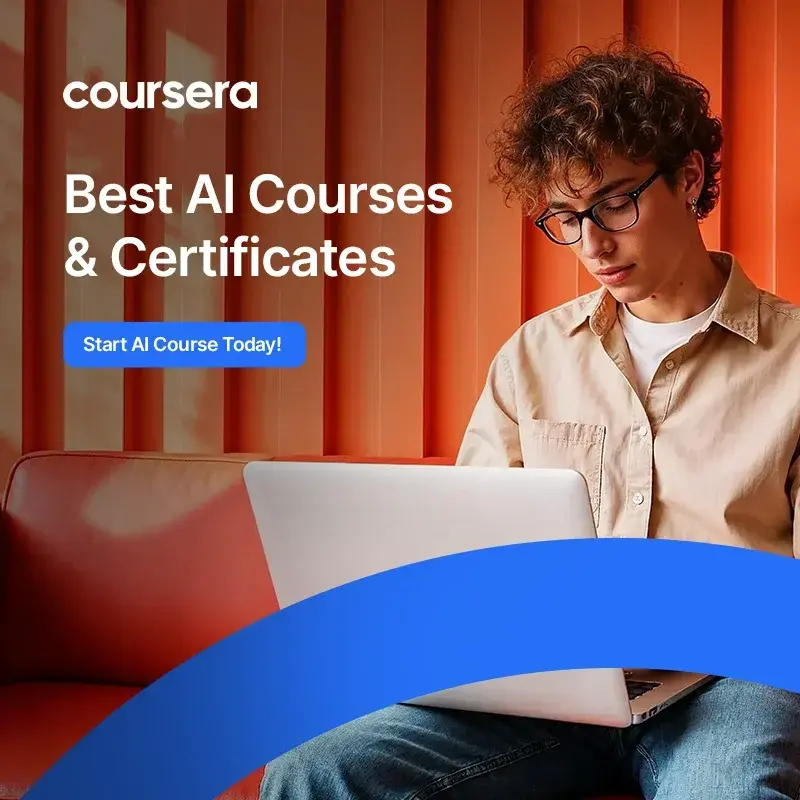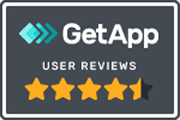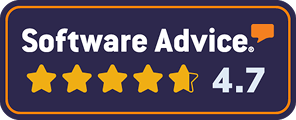As the co-founder of a London-based recruitment agency, I’ve reviewed more CVs than I can count , the polished, the promising, and the ones that never stood a chance.
What’s changed dramatically in recent years isn’t just how resumes look, it’s how they’re read. More often than not, they’re not being reviewed by a person like me at first. They’re being scanned by artificial intelligence.
From applicant tracking systems to AI-powered screening tools, technology is now the first gatekeeper in the hiring process. This shift has made it more important than ever for job seekers to understand how these systems work, and how to write resumes that speak to both AI scanners and human readers.
In this guide, I’ll walk you through how to create an optimized resume that gets through the filters and onto the shortlist.
What Is Resume Optimization for AI , and Why It Matters
Optimizing your resume for AI means making it readable , not just for recruiters like me, but for the software systems that scan, sort, and score your application before I ever lay eyes on it. These systems, known as applicant tracking systems (ATS) or AI scanners, are designed to identify the most relevant candidates based on how well your CV matches the job description.
The reality is stark: many applicants never make it past this digital filter.
A beautifully written CV can be rejected simply because it didn’t include the right keywords, used the wrong file format, or was not structured in a way the AI software could understand.
I’ve seen fantastic candidates get overlooked, not because they were not qualified, but because their resume was not ATS-friendly. That’s the key difference between a resume that gets through and one that disappears into the void.
The good news? With the right approach, you can easily optimize your resume for both AI technology and human interaction, and that’s exactly what I’ll help you do.
How ATS Works , And What It’s Really Looking For
Understanding how an applicant tracking system (ATS) works is the first step to beating it.
Think of it as a highly logical but not always intuitive filter. It scans your resume looking for keywords, structure, and signals that suggest you’re a good match for the role based on the job description.
Here’s how the process works behind the scenes:
- Keyword Matching: ATS software looks for specific terms from the job ad, like “calendar management,” “Microsoft Excel,” or “international marketing.” If your resume doesn’t include those exact words, the system might assume you don’t have the right skills.
- Formatting Checks: The system parses your resume section by section. If you’ve used tables, graphics, or unusual headers, it might not read parts of your CV at all, which is one of the biggest mistakes I see.
- Ranking Candidates: The software scores each application based on how well it aligns with the employer’s requirements. The higher your score, the more likely your resume is to make it in front of a real person like me.
You need to make sure your resume clearly reflects your qualifications, in language the ATS understands. And that starts with formatting.
Creating an ATS-Friendly Resume Layout
One of the most common reasons resumes get rejected by hiring systems is surprisingly simple: formatting.
An ATS isn’t as sophisticated as a human reader , it can’t interpret images, tables, or creative layouts. So while design might win you points with a hiring manager, it could cost you the interview if the AI software can’t read it properly.
Here’s how to format your resume both for AI scanners and recruiters like me:
1. Use a Clean, Simple Layout
Stick to a straightforward structure with standard headings like:
- Experience
- Education
- Skills
- Certifications
Avoid columns, graphics, and text boxes as they confuse most ATS systems.
2. Choose the Right File Type
Save your resume as a PDF or Microsoft Word (DOCX) file, unless the job ad specifies otherwise. These formats are widely accepted by most hiring systems.
3. Prioritise Readability
Use a clear, sans-serif font, such as Arial or Calibri, sized between 10 and 12 points. Ensure that your bullet points are aligned, spacing is consistent, and dates are formatted uniformly throughout.
4. Keep It Professional and Consistent
Avoid coloured backgrounds, decorative borders, or logos. Stick to a professional appearance that supports rather than distracts from your content.
A clean format won’t just help your resume pass the ATS scan. It also helps hiring managers and recruiters like me quickly assess your experience, which increases your chances of moving forward in the hiring process.
Qureos has over 2000 free resume templates to help you find a starting point.
Keyword Optimization: Speaking the Same Language as the Job Description
If there’s one thing every job seeker needs to know about AI screening, it’s this: keywords matter. A lot.
Applicant tracking systems look for relevant keywords that appear in the job description. If your resume doesn’t “speak the same language,” the ATS may assume you’re not a good fit, even if you are.
Here’s how to make keyword optimization work for you:
1. Analyse the Job Description
Print it out, highlight repeated phrases, and take note of any specific skills, tools, or certifications. These are the terms you’ll want to mirror on your resume , naturally and strategically.
For example, if the job ad says:
“Experience supporting C-suite executives and coordinating international marketing campaigns…”
You should include phrases like “C-suite support” and “international marketing coordination” in your professional summary and work experience sections, if relevant to your background.
2. Incorporate Keywords Thoughtfully
Don’t just list buzzwords. Weave them into your bullet points and achievements:
“Coordinated international marketing initiatives across 3 regions, increasing campaign efficiency by 18%.”
Include a mix of:
- Hard skills (e.g. Salesforce, diary management, GDPR compliance)
- Soft skills (e.g. communication, discretion, adaptability)
- Industry-specific terms from the job description
Where to Place Keywords:
- Professional summary
- Work experience
- Skills section
- Certifications or tools used
Using the right words in the right places helps the AI software recognise you as a good match, and increases the odds your resume will make it through to a real person.
If you’re struggling to identify your skills, why not try Qureos’ Resume Skills Generator?
Tailor Every Resume (Yes, Every Time!)
This might not be what you want to hear, but I’ll say it anyway: the most effective resumes are tailored for each and every application.
Yes, it takes a little extra time. But as someone who’s seen thousands of generic CVs slide straight through the cracks, I promise you it makes a big difference.
Here’s why tailoring matters so much:
1. AI Systems Are Job-Specific
ATS software compares your resume directly against the job description. If the keywords, skills, or language don’t align closely, you’ll rank lower, even if you’re a strong candidate.
2. Tailoring Helps You Match the Role
Think of it this way: you're not changing your experience, you're changing the way you present it to make sure it resonates. That means:
- Rewriting your summary to echo the role’s focus
- Reordering bullet points to showcase the most relevant achievements
- Including tools or terms specifically mentioned in the listing
Example:
One of my candidates was applying for a senior EA role in a fintech firm. Her original resume focused heavily on general office support. We reworded a few key sections to spotlight her experience supporting high-level decision-makers and handling confidential data. She went from no responses to three interview invites within two weeks.
If you’re writing a prospective resume, you may want to consider reviewing your resume against our office role job description templates.
Common Mistakes That Get Resumes Rejected by AI (and Humans)
I can usually tell within seconds whether a resume is going to make it through an ATS, and often, it’s the same simple errors that hold people back. What many job seekers don’t realise is that formatting, phrasing, or even just a missing keyword can be the difference between getting shortlisted or overlooked.
Here are the most common pitfalls I see (and how to avoid them):
1. Overdesigned Layouts
Creative CVs with multiple columns, tables, or icons may look stylish, but most AI scanners can’t read them. If it can’t be parsed, it won’t be processed.
Stick to a clean, linear structure with standard headings. Let your experience shine, not your graphic design skills.
2. Keyword Mismatches
You might write “client correspondence,” but the job description says “customer communication.” That mismatch could cost you.
Use the same language the employer uses, especially for key skills and responsibilities.
3. Unexplained Acronyms and Jargon
If you write “Handled GDPR, CCPA, and ISO 27001 compliance,” make sure to spell out at least one acronym the first time: “General Data Protection Regulation (GDPR).” AI software may not recognise it otherwise.
4. Spelling and Grammatical Errors
Whether it’s a misplaced apostrophe or a formatting slip, errors undermine your professionalism, and AI may flag them as red flags.
Proofread your resume (and cover letter) carefully. Use tools or ask a friend to review it.
Make It Human-Ready Too: Resumes That Win Interviews
Once your resume passes the ATS filter, it finally lands where you want it: with a real person like me. And this is where so many AI-optimized resumes fall short. They may be full of keywords, but they lack story, clarity, or human appeal.
Here’s how to make sure your resume resonates with both hiring systems and hiring managers:
1. Lead with Impact
Use strong, active language and measurable achievements. Instead of:
“Responsible for managing executive calendars”
Try: “Managed complex calendars for two C-suite executives, scheduling 50+ meetings per month with zero conflicts”
It gives me something to visualise and proves you’re results-driven.
2. Keep it Easy to Scan
Recruiters spend seconds skimming for highlights. Use clear bullet points, consistent formatting, and no dense paragraphs. Make it effortless to see your skills and experience at a glance.
3. Showcase Human Qualities
Highlight soft skills that matter: discretion, flexibility, initiative. Mention how you supported others, navigated pressure, or contributed to team success. These elements rarely show up in AI scanners, but they’re what often seal the deal.
AI might shortlist your resume, but it’s the human interaction that gets you hired. Don’t just pass the system, impress the person.
If you’ve had lots of temp positions, you may want to consider how to best present this on your resume to appeal to recruiters.
This article also touches upon how to explain career gaps on your resume.
Bonus Tips: Cover Letters, Uploading, and Final Checks
By now, your resume should be ATS-friendly, keyword-rich, and human-ready, but before you hit “submit,” here are a few final touches that can make all the difference in the hiring process.
1. Don’t Skip the Cover Letter
Even if the job posting says it's optional, include one. While most AI systems won’t analyse it, hiring managers absolutely do. It’s your chance to showcase personality, explain a career change, or clarify how your experience fits the role.
2. Upload with Intention
Always double-check the file format. PDF or Microsoft Word files are safest, but some platforms specify what’s compatible with their AI scanners. Also: rename your file professionally (e.g., “Auria_Heanley_Resume.pdf”).
3. Proofread , Then Proofread Again
Even a small typo can signal a lack of attention to detail. I’ve seen stellar candidates lose traction over basic grammatical errors. Use tools like Grammarly, then ask someone else to review it, or even run it through a resume checker like Jobscan.
Final Submission Checklist:
- Resume uses clean, consistent formatting
- Keywords are aligned with the job description
- CV is tailored to the position
- No spelling or grammar issues
- Cover letter included
- File name is professional
AI Isn’t the Enemy , It’s a Filter You Can Beat
I know the rise of AI technology in recruitment can feel intimidating, especially when you’re already juggling applications, interviews, and career uncertainty. But here’s the truth: AI software isn’t replacing human interaction – it’s just filtering the noise. And with the right approach, you can absolutely get through.
So take a deep breath, open your resume, and fine-tune it with confidence. You’re not just trying to get hired, you’re preparing to stand out. If in doubt, use Qureos’ free resume builder to help make sure you get hired!







.webp)





